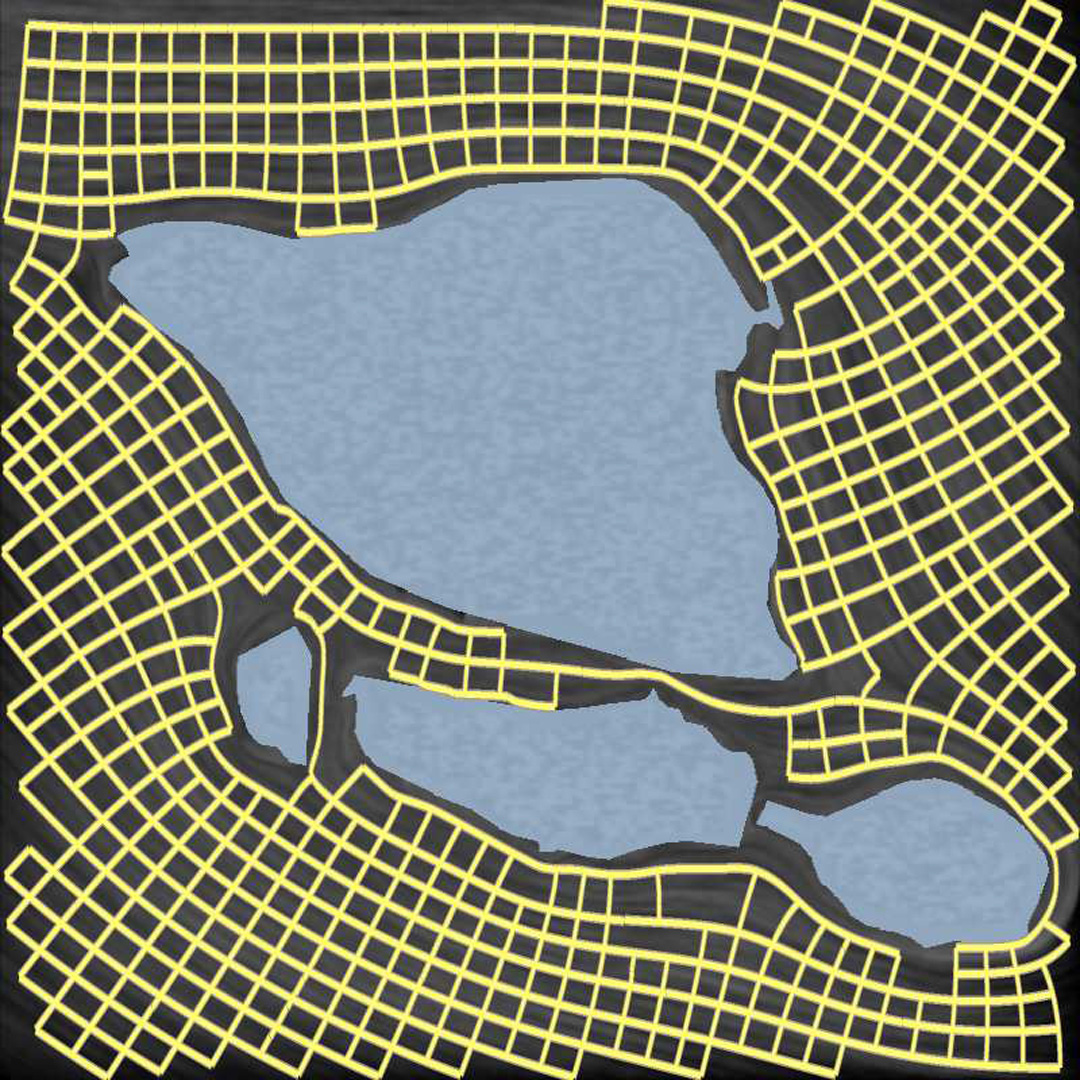“Interactive procedural street modeling” by Esch, Wonka, Müller and Zhang
Conference:
Title:
- Interactive procedural street modeling
Session/Category Title: It’s All About the Environment
Presenter(s)/Author(s):
Abstract:
This sketch presents a solution to efficiently model the street networks of large urban areas. Parish and Müller [2001] were the first to note that the street network is the key to create a large urban model. While this algorithm created a high quality solution, the method does not allow to incorporate user-control. To address this limitation we provide a rather different alternative to street modeling that allows to integrate a wide variety of user input. The key idea is to use tensor fields to guide the generation of street graphs. A user can interactively edit a street graph by either modifying the underlying tensor field or by changing the graph directly. This allows for efficient modeling, because we can combine high-level and low-level modeling operations, constraints, and procedural methods. The major contributions are as follows: (1) We are the first to introduce a procedural approach to model urban street networks that combines interactive user-guided editing operations and procedural methods. (2) We are introducing a new methodology to graph modeling in general. The idea of tensor-guided graph modeling together with the tight integration of interactive editing and procedural modeling has not been explored previously in related modeling problems, such as modeling of bark, cracks, fracture, or trees.
References:
1. Parish, Y. I. H., and Müller, P. 2001. Procedural modeling of cities. In Proceedings of ACM SIGGRAPH 2001, ACM Press, E. Fiume, Ed., 301–308.





